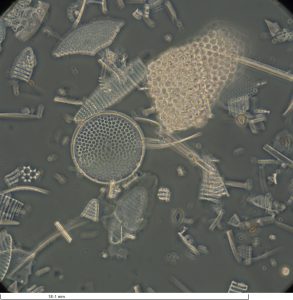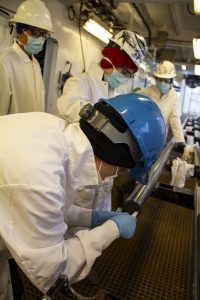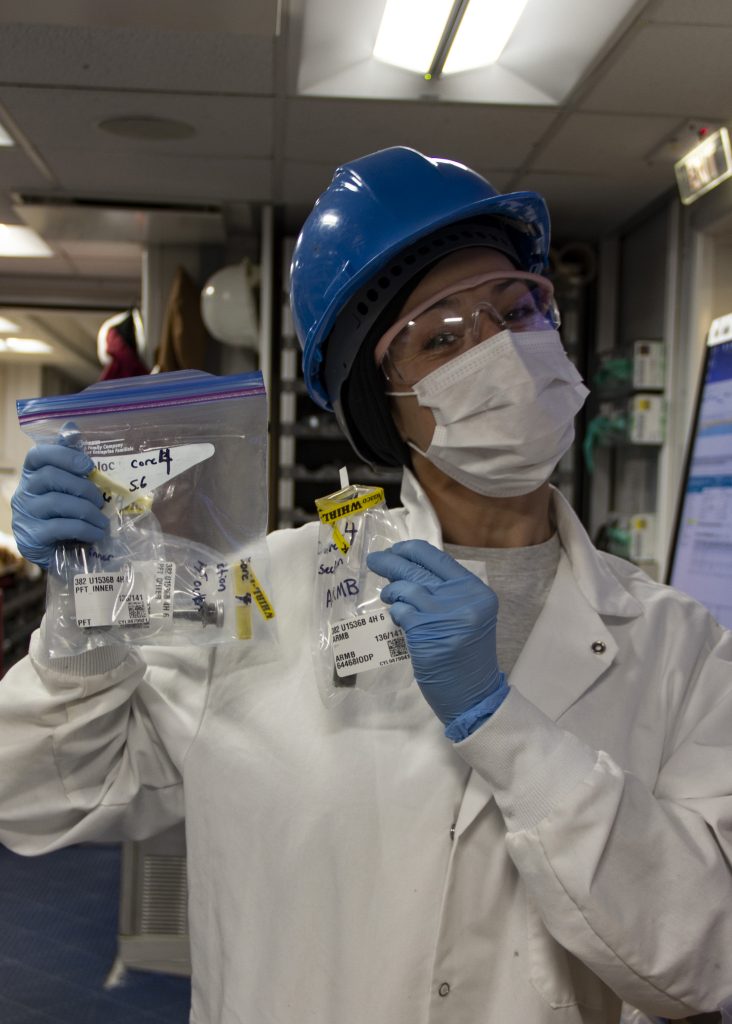
Squeezing DNA from Mud

Diatom paleontologist Dr. Linda Armbrecht wants to use the past to understand how modern climate change might affect marine life. But the microfossils she looks at every day through the microscope are only one piece of the puzzle. To answer questions about how ocean ecosystems have changed over the last 12,000 years and beyond, she’s looking for something else in the mud: ancient DNA.
“I’m using DNA to reconstruct what past plankton communities looked like beyond what the incomplete microfossil record can tell us, for a more accurate picture,” says Linda.
Back at the Australian Center for Ancient DNA at the University of Adelaide, others are busy answering questions about animal extinctions and human evolution with ancient DNA. Linda is the only person there using these same techniques to study sea life and how it responded to changes in the environment. Specifically, she looks at phytoplankton: extremely small algae that float in the water.

“They’re the most likely organisms for us to find DNA from, since they are found everywhere,” says Linda. “DNA from other organisms, fish or whales, is probably much more patchy and much harder to find.”
Ancient DNA is hard enough to find anyway. “You only have a fraction of DNA from a dead organism, compared to when it was alive — and what is left is usually quite degraded,” says Linda.
Unlike ancient DNA, which is fragmented and hard to find, modern DNA is intact and it can be found everywhere – bits of hair and skin from people, microbes in the water, even animals that burrow down in to the soil. If it ends up in Linda’s samples, its presence might overpower the ability to detect any ancient DNA.

So during her DNA sampling, Linda spends a lot of time reducing the chances of contamination. As she handles samples, Linda wears a hairnet, lab coat, gloves, and a face mask, in addition to spraying every surface in the lab with ethanol and bleach before sampling. She scrapes off the first 3 millimeters of sediment to make sure any that has touched the core-splitting tools is not used. Contamination could also come from seawater used to operate the pump inside the drill, so chemical tracers are added to the pump water, which Linda can then measure to show the presence or absence of sediment contamination.
Once Linda is home with her samples, she will extract all the DNA fragments found within them and read the sequences of DNA code in the fragments. Using high-power computers, she will then compare what she finds to existing databases of genes and genomes to determine what organisms’ DNA she caught. Together with the microfossil data generated from visually scanning the same sediment under a microscope, Linda can then compare the species identified from each method. Putting these two sources of species identification together will provide a more complete picture of how the types of plankton found at these Southern Ocean sites have changed over time.
The communities of phytoplankton that existed in past oceans can tell us about the history and functioning of past ocean ecosystems. Were the oceans warmer or cooler? Saltier or fresher? Was there more or less carbon dioxide in the atmosphere? Some phytoplankton only occur near sea ice, so their presence could tell us about the extent of sea ice in the past, and therefore about long-term natural climate variability.
“It all comes down to reconstructing past climates,” says Linda. “If we can see how ocean life responded to natural changes in the climate in the past, we can better predict how these communities might respond to the faster climate changes that are occurring now.”

Great to see that Linda is up to her “covered” elbows in mud for ancient DNA samples! Looks like she is enjoying the expedition!